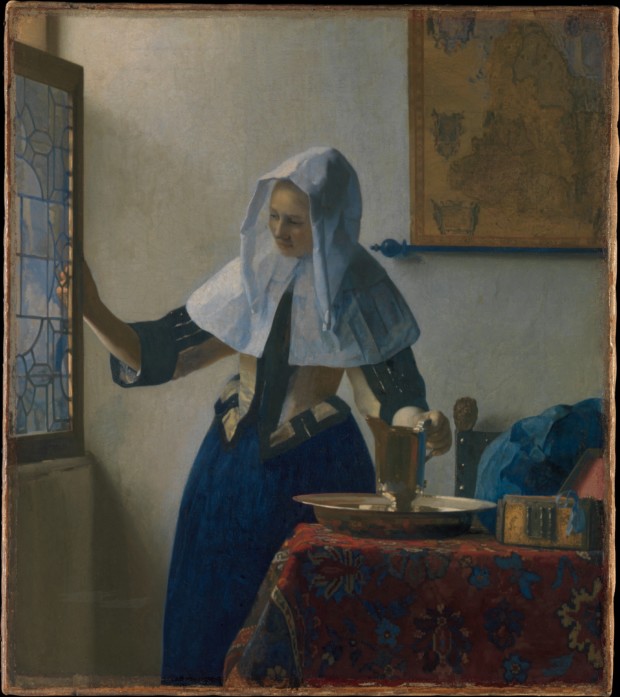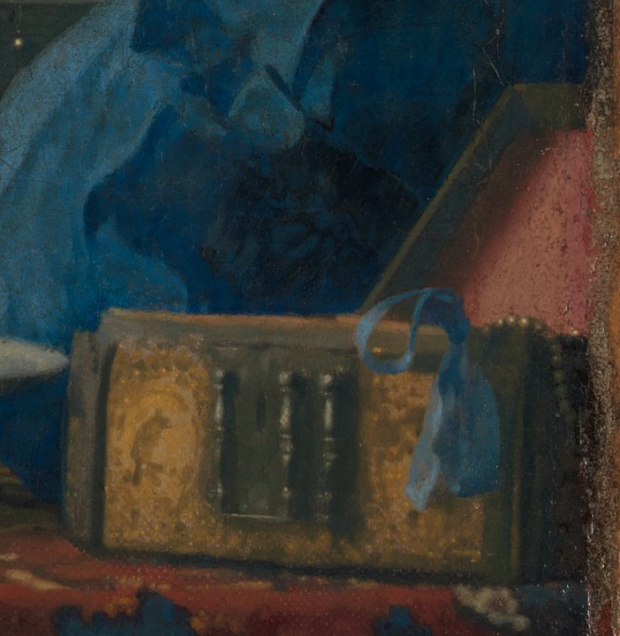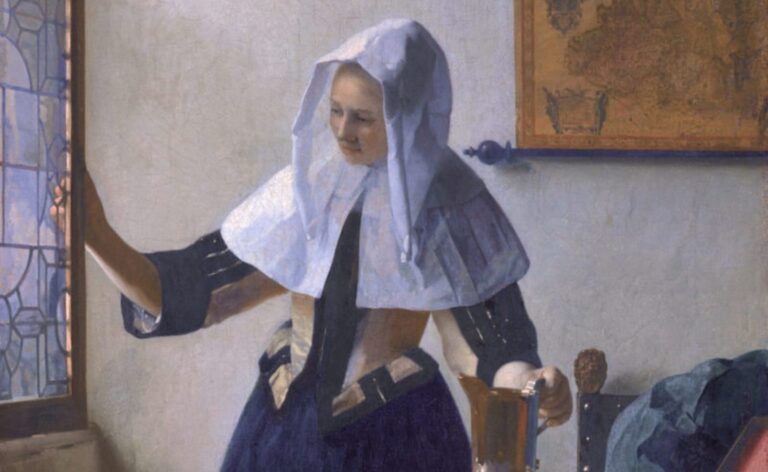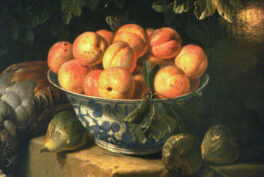This is a typical Vermeer – an ideal woman in an ideal home. In fact, everything around is ideal. Balanced shapes and colors (mainly the primaries) enhance the harmonious mood. The basin and water pitcher are recognized as traditional symbols of purity. Everything on this painting is in a right place.

Young Woman with a Water Pitcher portrays an intimate moment in the household and it is an ideal image of domesticity in 17th century Dutch society. This is reaffirmed by the woman’s headdress known as a ‘hoofdoek’ which was worn to protect the head in cold weather, to protect the hairstyle before public events and was also worn during a morning toilette. The objects, like the ornate jewelry box and its rich interior prove that the woman is from a wealthy upper or middle-class family. Also, the rich eastern rug on the table was a very expensive possession at this time and was extremely very hard to come by.

The map of the Netherlands above the girl’s head to the rights was a common decoration in Dutch households. It also demonstrates Vermeer’s ideal of a united country and conveys a sense of Dutch pride. The map also promotes a triangular composition.

Btw. by looking at these details you can see how Vermeer painted. Comparing to some of his fellow artists – who were polishing every single detail, Vermeer is more “airy”, less definite.
The model is believed to be Vermeer’s wife Catharine or his eldest daughter, Maria, who bore a striking resemblance to her mother. Inventories made after Vermeer’s death show that Catharine wore headdresses such as the one depicted here.

Young Woman with a Water Pitcher was purchased by Henry Gurdon Marquand in 1887 at a Paris gallery for $800. When Marquand brought it to the United States, it was the first Vermeer in America. Marquand donated the artwork along with other pieces in his collection to the Metropolitan Museum of Art in New York City.
Find out more:
[easyazon_image align=”none” height=”160″ identifier=”1596915994″ locale=”US” src=”https://www.dailyartmagazine.com/wp-content/uploads/2017/09/51qXZ2BFB1bL.SL160.jpg” tag=”dailyartdaily-20″ width=”107″] [easyazon_image align=”none” height=”160″ identifier=”3836566583″ locale=”US” src=”https://www.dailyartmagazine.com/wp-content/uploads/2017/09/51eGBxbWMkL.SL160.jpg” tag=”dailyartdaily-20″ width=”123″] [easyazon_image align=”none” height=”160″ identifier=”0300222939″ locale=”US” src=”https://www.dailyartmagazine.com/wp-content/uploads/2017/09/519b97AsxL.SL160.jpg” tag=”dailyartdaily-20″ width=”137″]






